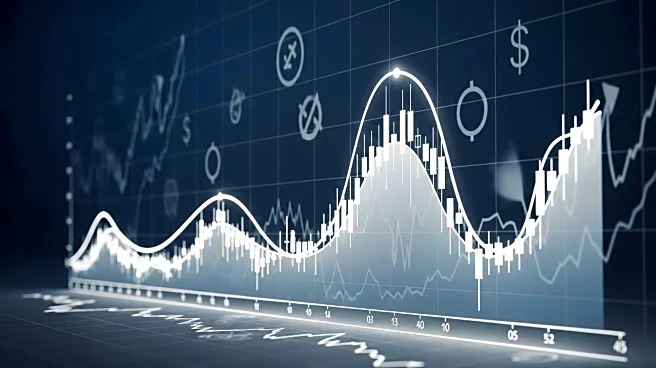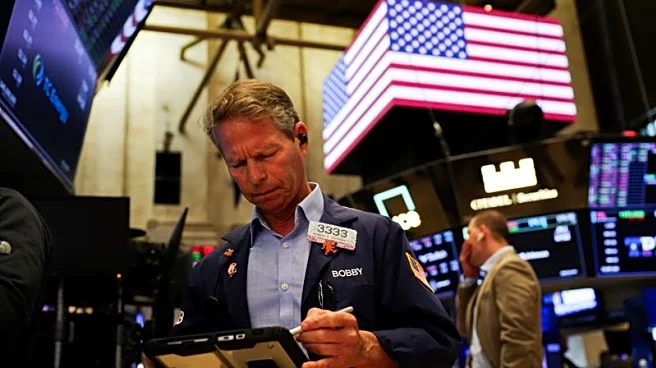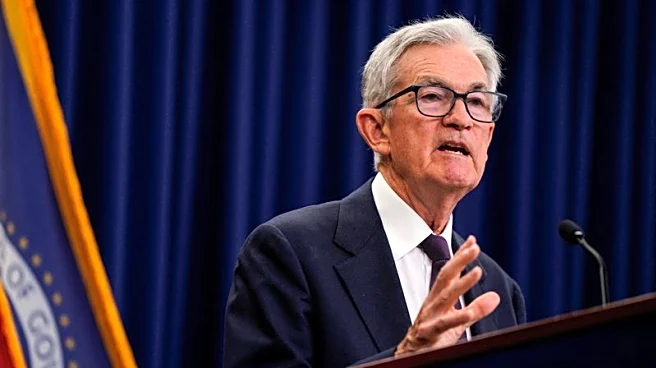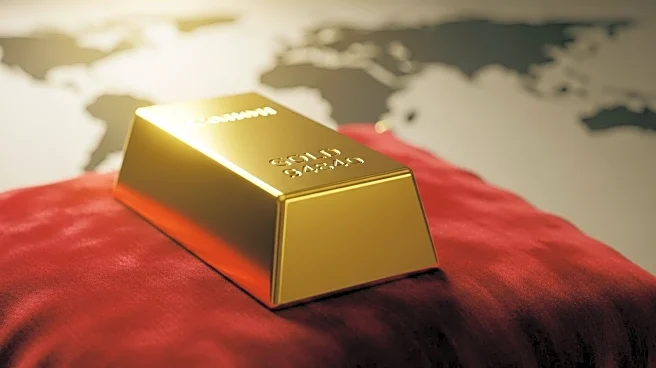What's Happening?
Gold prices have surged past the $4,200 mark for the first time, driven by expectations of further U.S. interest rate cuts and ongoing geopolitical and economic uncertainties. Spot gold increased by 1.4%
to $4,200.12 per ounce, with U.S. gold futures for December delivery rising by 1.3% to $4,216.20. The metal has seen a 59% increase this year, fueled by factors such as strong central bank buying, a trend towards de-dollarization, and robust inflows into exchange-traded funds. Analysts suggest that the continuation of the U.S. government shutdown, dovish comments from Federal Reserve officials, and escalating trade tensions between the U.S. and China could further support gold prices. The U.S. dollar weakened against other currencies following remarks from Federal Reserve Chair Jerome Powell, which reinforced expectations of rate cuts in the coming months.
Why It's Important?
The rise in gold prices reflects broader economic and geopolitical uncertainties, which have led investors to seek safe-haven assets. The potential for further interest rate cuts by the Federal Reserve could continue to bolster gold prices, as lower rates typically enhance the appeal of non-yielding assets like gold. This trend may impact various stakeholders, including investors, central banks, and policymakers, as they navigate the complexities of a shifting economic landscape. Additionally, the ongoing U.S. government shutdown and trade tensions with China add layers of uncertainty that could influence global markets and economic policies.
What's Next?
Market participants are closely watching the Federal Reserve's actions, with traders pricing in a 25 basis-point rate cut in October and another in December. The likelihood of these cuts is seen as 96% and 93%, respectively. The U.S. government's consideration of cutting some trade ties with China, following the imposition of tit-for-tat port fees, could further affect global trade dynamics. The prolonged government shutdown may also cloud economic data, complicating decision-making for policymakers both domestically and internationally. Analysts predict that gold could reach the $5,000 level in the medium to long term if current trends persist.
Beyond the Headlines
The surge in gold prices highlights the broader implications of economic and geopolitical instability, including the potential for shifts in global trade relationships and monetary policy strategies. The de-dollarization trend suggests a reevaluation of currency reserves by central banks, which could have long-term effects on international financial systems. Additionally, the reliance on gold as a hedge against inflation and uncertainty underscores the challenges faced by economies in maintaining stability amid fluctuating interest rates and political tensions.












